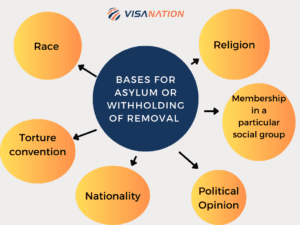Most States Do Not Have EB-5 Regional Centers, According to a List Published by an Industry Source
The controversial EB-5 immigrant investor program is supposed to be a nationwide program for bringing alien money and a few alien families into the U.S.
But, as we have noted earlier, most of the money from it has gone to glitzy, big-city real estate projects, rather than to the depressed areas it was supposed to serve. And there have been many scandals in which U.S.-based operators have fleeced would-be investors, often from China.
The aliens’ investments are handled by U.S.-based regional centers, each of which is licensed by the Department of Homeland Security. A total of nearly 10,000 visas a year are available to alien family members in the program; since each investment creates about 2.5 visas, the program produces about 4,000 investments each year on average.
The main part of the program suffered a nine-month hiatus of activity while Congress decided how to reform it. Meanwhile, USCIS has, understandably, been loath to issue much data on it. A listing of projects by congressional district, for example, would show that the vast majority of districts had no EB-5 activity — so no such list is available.
But we now have published information, from an industry source, that lists the names and states of the regional centers; this shows that in a majority of the states of the union there are no regional centers at all.
EB-5 Investors does not quite get around to saying it that way, and lists 23 states and the District of Columbia as having such centers; included in the list of 24 is South Dakota, scene of numerous EB-5 scandals in the past, in which the industry writer notes that there are no longer any centers.
That means that 27 states have none, or none known to the industry entity; none of the island territories have any regional centers, either, though other lists in the past have shown a few of them.
What is also interesting about the industry listing is the fact that more than 40 percent of them lack websites. This suggests that a big minority of the listings are of firms that have gone out of business or are on the track to do so. If you have $800,000 to invest in the American economy, the entrance fee in this program, do you want to put your money into an outfit without a website, when a majority of the competitors have such sites?
As background, USCIS refuses to update its lists of regional centers, a number that must be dropping daily, and it similarly refuses to publish unduplicated lists of the centers. These centers can operate in more than one state; printing state-by-state listings with no notations on the overlaps simply serves to (misleadingly) inflate the number of such centers nationally.
Similarly, the list of terminated centers in this controversial program (with regional centers often playing the role of the bad guys) has not been updated since February 1, 2021. The list for that date (which may or may not include duplications) included 545 terminated centers. This little list, an indication of the failings of the EB-5 program, may be approaching 1,000, but USCIS will not tell.
The state with the largest decline in EB-5 regional centers proportionately may well be Washington State. EB-5 Investor, in its section on regional centers in that state, says that there were 55 such centers in 2020 and now it has only three of them, all with websites. Similarly — and also on the West Coast — the listing shows that a majority of the regional centers in California do not have websites, this applies to 89 of the 158 centers listed for that state.
The handsomely-produced industry publication shows some photos of successful EB-5 projects in each of the states noted, lists rural counties that are eligible for these investments (but seldom get them), and then wraps up the presentation for each state with a listing of the regional centers authorized to operate there. Centers with websites are identified as such.
Bear in mind, regarding the table that follows, that there are unresolved duplications in the numbers as well as out-of-date information — both factors that make the numbers below misleadingly large.
List of States and EB-5 Regional Centers, With and Without Websites |
||||
| State | EB-5 Regional Centers with Websites | EB-5 Regional Centers Without Websites | State Totals | Percentage of Centers Without Websites |
| Alabama | 9 | 5 | 14 | 36% |
| Arizona | 6 | 2 | 8 | 25% |
| California | 69 | 89 | 158 | 56% |
| Colorado | 7 | 3 | 10 | 30% |
| Florida | 38 | 20 | 58 | 34% |
| Georgia | 16 | 9 | 25 | 36% |
| Idaho | 3 | 0 | 3 | 0% |
| Illinois | 15 | 11 | 26 | 42% |
| Louisiana | 12 | 3 | 15 | 20% |
| Maryland | 12 | 11 | 23 | 48% |
| Mississippi | 8 | 5 | 13 | 38% |
| Montana | 3 | 1 | 4 | 25% |
| Nevada | 13 | 6 | 19 | 32.% |
| New Jersey | 45 | 31 | 76 | 41% |
| New York | 58 | 39 | 97 | 40% |
| North Carolina | 16 | 4 | 20 | 20% |
| Ohio | 11 | 5 | 16 | 31% |
| Oregon | 10 | 10 | 20 | 50% |
| Pennsylvania | 36 | 17 | 53 | 33% |
| Texas | 30 | 38 | 68 | 56% |
| Vermont | 2 | 0 | 2 | 0% |
| Washington | 3 | 0 | 3 | 0% |
| D.C. | 12 | 6 | 18 | 33% |
| Wisconsin | 9 | 7 | 16 | 44% |
| Totals | 443 | 321 | 764 | 42% |
| Source: “EB-5 Projects”, EB-5 Investors. | ||||
The states without EB-5 regional centers according to this document (by subtraction) are Alaska, Arkansas, Connecticut, Delaware, Hawaii, Indiana, Iowa, Kansas, Kentucky, Maine, Massachusetts, Michigan, Minnesota, Missouri, Nebraska, New Hampshire, New Mexico, North Dakota, Oklahoma, South Carolina, Rhode Island, South Dakota, Tennessee, Utah, Virginia, West Virginia, and Wyoming, though many had them in the past.
The author is grateful to CIS intern Nathan Desautels for his research assistance.




